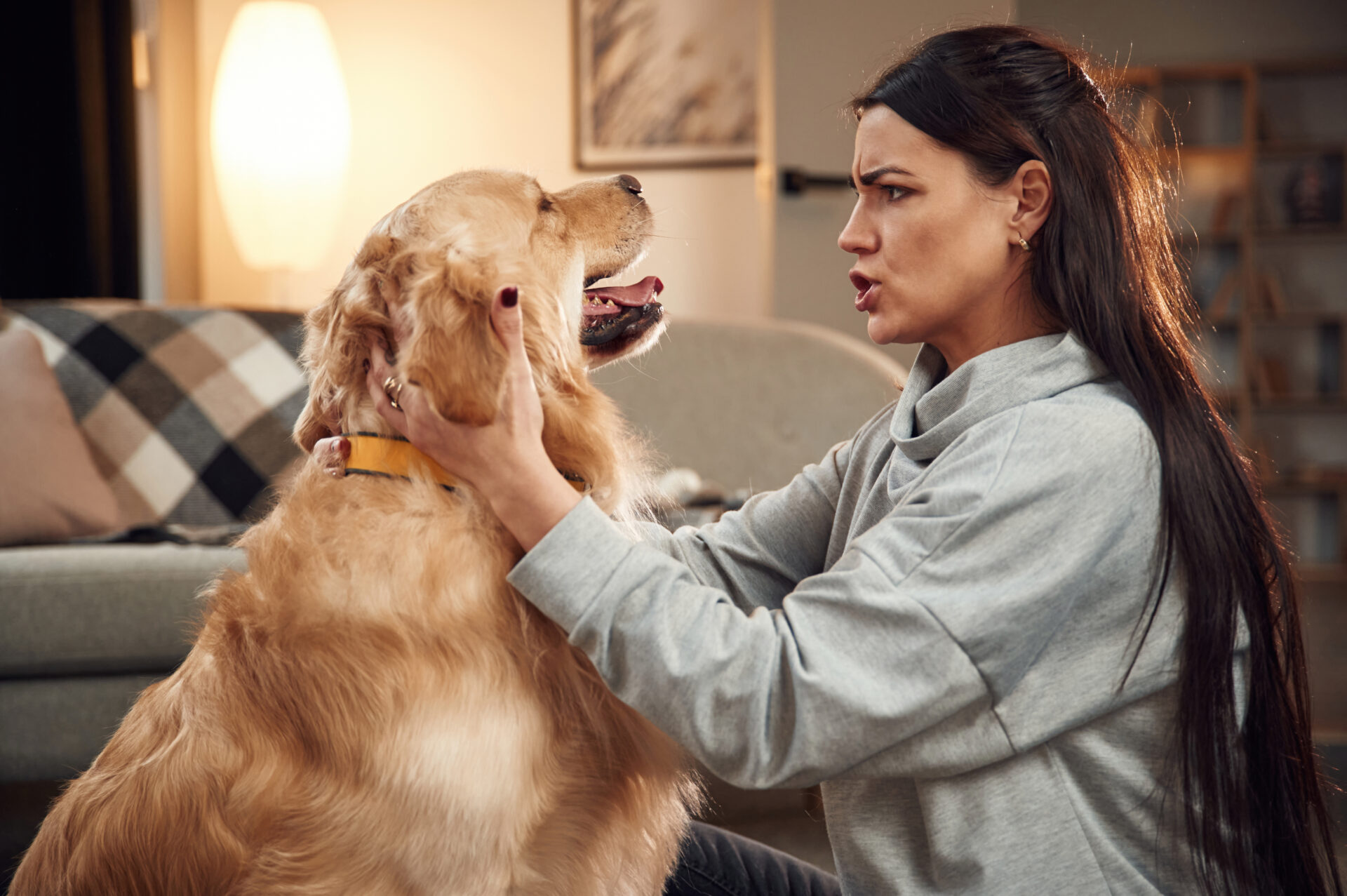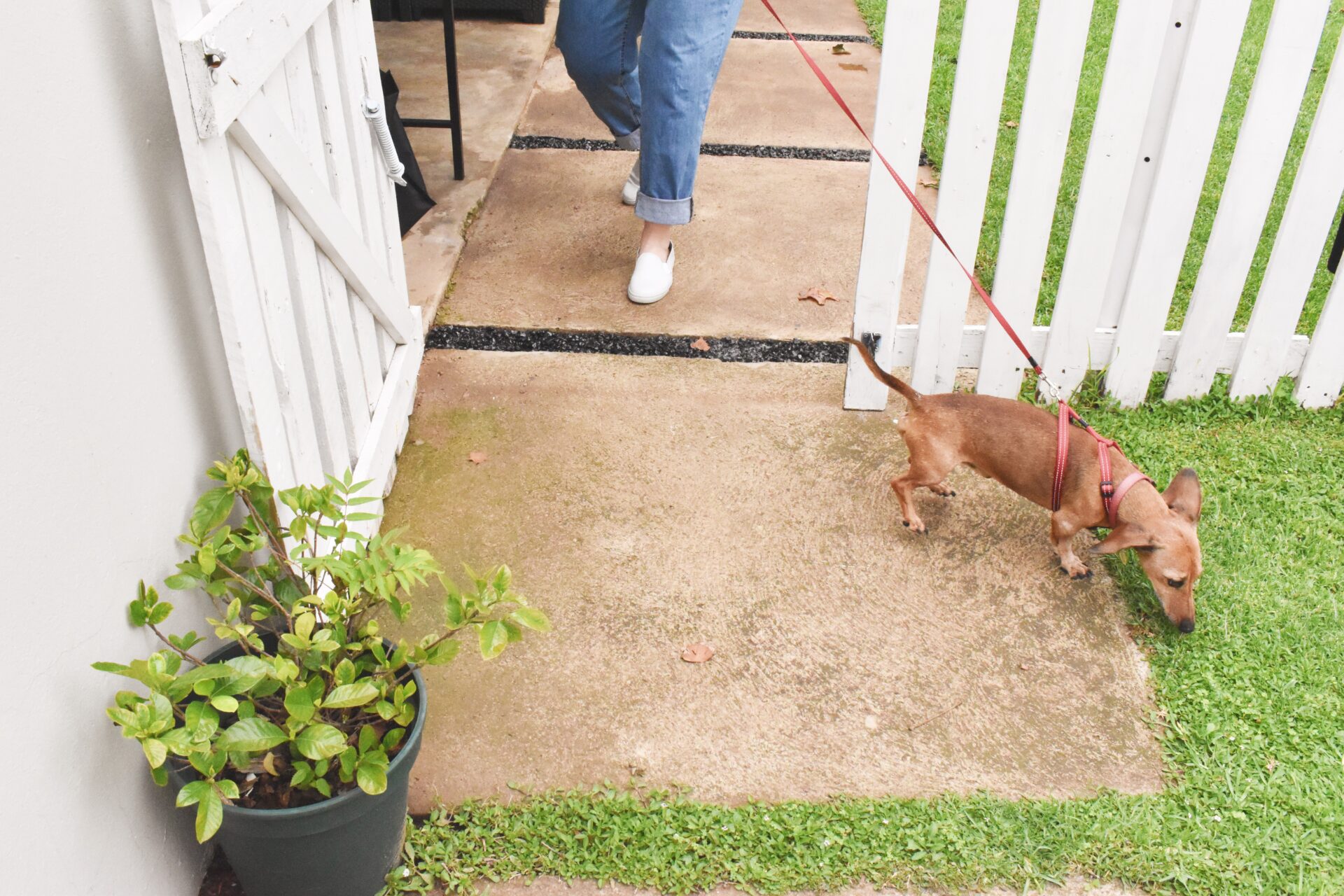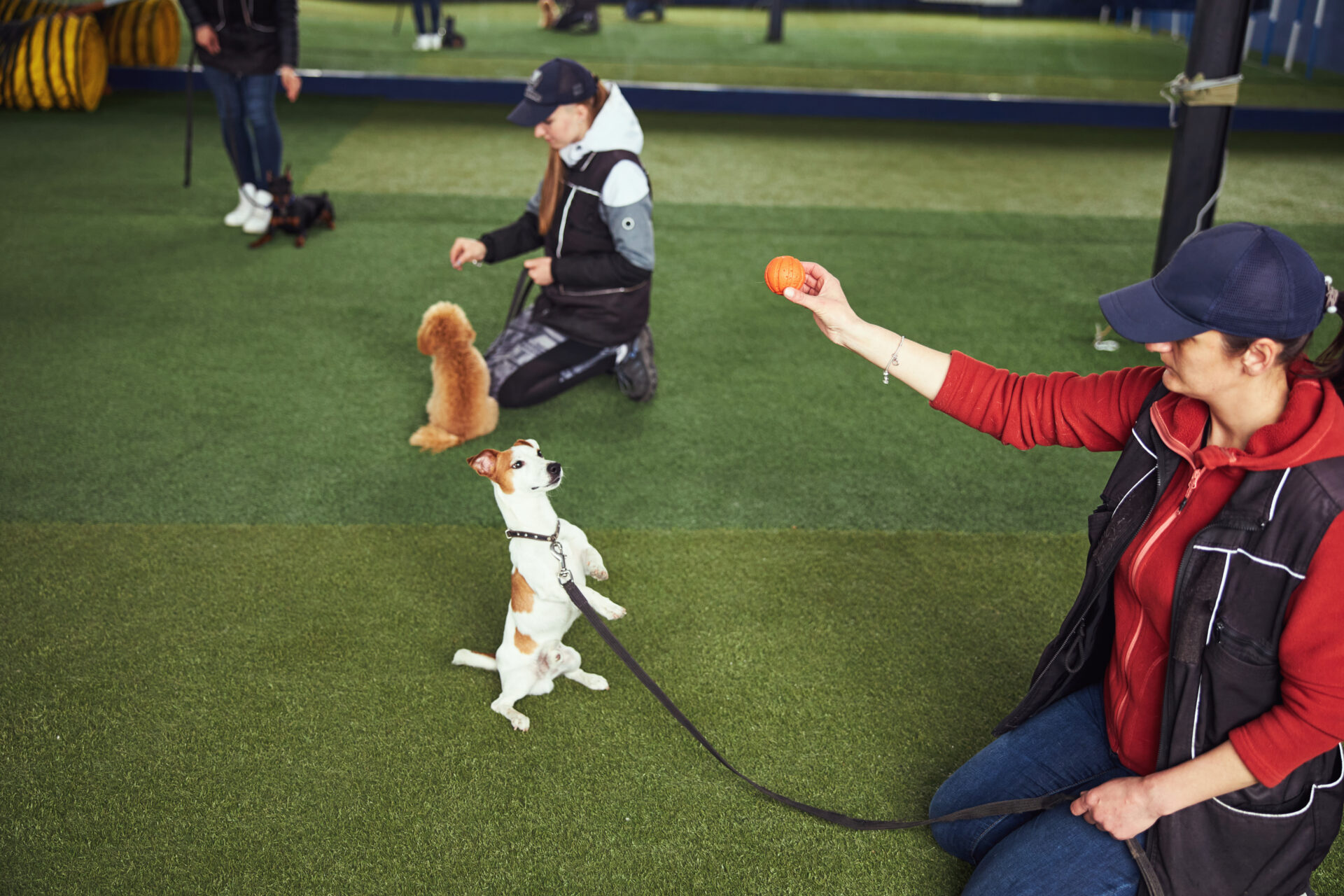If your dog has been marking in the house, you’re not alone. This guide explains why dogs mark and provides proven strategies to stop the behavior. Unlike a full-blown accident, marking is your dog’s way of claiming territory or responding to certain stimuli. While it’s a natural instinct, marking indoors can quickly become a frustrating habit. Here are some tips to help you stop dog marking in your home.
Fortunately, with patience and consistency, you can address and correct this behavior. Let’s dive into why dogs mark, what triggers it, and how to prevent it from happening in your home.
Some of the links on this page are affiliate links, which means we may earn a commission at no extra cost to you if you make a purchase. As an Amazon Associate I earn from qualifying purchases. We only recommend products we genuinely love and think you’ll find helpful!
Table of contents
Why Dogs Mark in the House
Marking is a form of communication for dogs. By releasing small amounts of urine, they leave behind scent signals that convey information to other dogs. Common reasons for marking include:
- Territorial Behavior: Dogs often mark to assert ownership over a space, object, or person.
- Stress or Anxiety: Changes in the environment, such as moving to a new home or introducing a new pet, can lead to marking as a coping mechanism.
- Hormonal Influences: Intact males are the most notorious markers due to the influence of testosterone, but females in heat can mark too.
- Excitement or Competition: Dogs might mark if they feel a strong need to compete for resources, attention, or dominance.
Understanding the root cause of your dog’s marking behavior is key to addressing it effectively. Now let’s get into actually stopping your dog or puppy from marking.

How to Stop Your Dog from Marking Indoors
Step 1: Rule Out Medical Issues
Before assuming the reason your dog is marking indoors is purely behavioral, visit your veterinarian to rule out any underlying medical conditions. Issues like urinary tract infections, bladder stones, or incontinence can cause inappropriate urination. If your dog is marking due to health problems, addressing these issues will often resolve the behavior.
See our full guide on choosing the right veterinarian for your dog.
Step 2: Spay or Neuter Your Dog
One of the most effective ways to stop indoor marking behavior is to spay or neuter your dog. Intact dogs are significantly more likely to mark, and early neutering can often prevent the behavior from developing at all.
While spaying or neutering doesn’t guarantee an immediate stop to marking, it can reduce the hormonal drive behind the behavior. Dogs that have been marking for a long time may require additional training to break the habit.

Step 3: Clean Marked Areas Thoroughly
Dogs are drawn to places they’ve marked before because they can still smell their scent, even after cleaning. To prevent repeat marking:
- Use an enzymatic cleaner specifically designed for pet odors to break down the urine molecules.
- Avoid ammonia-based cleaners, as these can mimic the smell of urine and encourage marking.
- Clean the area as soon as possible to remove any lingering scent cues.
The more thoroughly you clean, the less likely your dog will be to mark the same spot again.

Step 4: Supervise and Interrupt Marking
Close supervision is critical to stop dog marking. Keep an eye on your dog, especially in situations where they’re more likely to mark, such as visiting a friend’s house or encountering new furniture.
- Catch Them in the Act: If you see your dog lifting their leg or getting ready to mark, interrupt them immediately with a firm “No” or a clap. Then, redirect them to an appropriate activity, like going outside or playing with a toy.
- Reward Positive Behavior: Praise and reward your dog when they urinate outside or in the designated area. Positive reinforcement helps them understand where it’s acceptable to go.

Step 5: Establish a Routine
Consistency is crucial in preventing marking. Establish a regular feeding and potty schedule to create predictability for your dog.
- Take your dog outside frequently, especially after meals, naps, or playtime. Regular physical activity contributes to a well-behaved pup.
- Provide plenty of opportunities for bathroom breaks so they don’t feel the need to mark indoors.
- Stick to the same outdoor spot for bathroom breaks to reinforce their association with the appropriate place to go.
Step 6: Address Triggers That Cause Dog Marking
If your dog is marking due to stress or changes in their environment, identify and address the triggers.
- New Pets: Introduce new animals gradually and give your dog plenty of positive attention to reduce feelings of competition or insecurity.
- Visitors: Dogs may mark when unfamiliar people come into the house. Use crates or baby gates to restrict their access to areas they might mark.
- Changes in Routine: Keep your dog’s routine as stable as possible and provide extra exercise and mental stimulation to reduce stress.
Understanding what’s causing your dog to mark can help you create strategies to prevent it.

Step 7: Use Deterrents
Sometimes, physical deterrents can discourage marking in specific areas.
- Furniture Protection: Use belly bands for male dogs or washable dog diapers to prevent marking while training.
- Scent Deterrents: Sprays with citrus or other dog-repelling scents can discourage marking in certain areas.
- Barriers: Use baby gates or closed doors to restrict access to problem areas.
Deterrents should always be used alongside training to address the root cause of the behavior.

Step 8: Consider Professional Help
If marking persists despite your efforts, consult a professional dog trainer or behaviorist. They can help identify underlying issues and create a tailored plan for your dog.
Patience Is Key
Breaking a marking habit takes time and consistency. Dogs don’t understand why marking indoors is unacceptable unless we teach them. Be patient, and avoid punishment, as it can increase stress and make the problem worse.
By understanding your dog’s motivations and addressing them with care, you can help your furry friend learn to keep their scent-marking instincts outdoors where they belong. With persistence and love, a marking-free home is well within reach!
FAQs: Common Marking Questions
Why does my neutered dog still mark in the house?
Neutering can reduce marking behavior in many dogs, but it’s not always an instant fix. Some neutered dogs may still mark due to:
- Habit: If your dog marked frequently before being neutered, the behavior may have become ingrained.
- Stress or Anxiety: Changes in the home, such as a new pet or visitor, can trigger marking as a way to assert territory.
- Medical Issues: Urinary tract infections or bladder problems can mimic marking behavior.
Solution:
- Reinforce house training with positive rewards when your dog eliminates outside.
- Minimize stress by maintaining a consistent routine and using calming products like pheromone diffusers.
- Visit your vet to rule out any underlying health problems.
Will belly bands stop my dog from marking?
Belly bands can be a helpful temporary tool to manage marking, but they don’t address the root cause of the behavior. These bands act as a protective garment that wraps around your dog’s midsection, preventing urine from reaching furniture or flooring.
Advantages:
- They can help keep your home clean while you work on training.
- Belly bands discourage marking since dogs don’t like the sensation of urine in the band.
Tips for Using Belly Bands:
- Use them alongside training techniques, such as redirecting your dog when they attempt to mark.
- Choose a comfortable, washable band and ensure a proper fit.
- Avoid relying on belly bands as a long-term solution; focus on correcting the behavior.
How long does it take to stop a dog from marking indoors?
The time it takes to stop marking behavior depends on factors like your dog’s age, temperament, and consistency in training. With focused effort, many dogs can significantly reduce or eliminate marking within a few weeks to a few months.
Key Steps for Faster Results:
- Be Consistent: Stick to a training routine and avoid punishment, as it can increase anxiety and worsen marking.
- Clean Thoroughly: Use enzyme cleaners to remove any trace of urine and prevent repeat marking.
- Manage Triggers: Identify and address triggers, such as unfamiliar scents, new pets, or changes in the environment.
- Seek Professional Help: If marking persists despite training, consult a professional dog trainer or behaviorist.
Remember, patience is key! Reinforce good behavior and celebrate small progress along the way.




